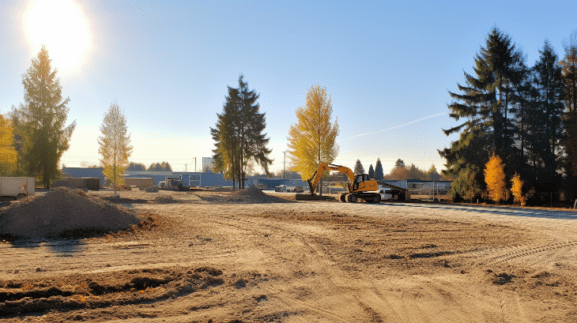Streamlining Out-of-Town Operations: How to Find the Perfect Staging Area for Your Equipment
When embarking on projects away from home base, project managers and companies face unique challenges in ensuring seamless operations. The success of any project heavily relies on the efficient organization and management of equipment and resources. One of the key factors in streamlining out-of-town operations is having a well-equipped staging area for the equipment. In this blog post, we will delve into the importance of a suitable staging area, the challenges project managers often encounter, and essential tips to find the perfect location.
The Challenges of Operating Out of Town
Operating out of town comes with a set of challenges that can be daunting for even the most experienced project managers. Some of the most common challenges include:
Logistical Complexity: Managing the transportation of equipment to and from the project site can be complex and time-consuming. Delays or mishandling during transit can disrupt the project schedule and increase costs.
Limited Local Knowledge: Unfamiliarity with the local area can make it difficult to identify the most suitable staging area. This lack of knowledge may also lead to problems related to accessibility, permits, and local regulations.
Inadequate Infrastructure: Not all locations have the necessary infrastructure to accommodate large equipment. Inadequate access roads, lack of power supply, and poor facilities can hinder operations.
Security Concerns: Equipment left unattended in unfamiliar areas can be vulnerable to theft and vandalism, leading to significant financial losses and delays.
The Importance of a Well-Equipped Staging Area
A well-equipped staging area serves as the backbone of out-of-town operations. It acts as a central hub where equipment can be stored, maintained, and dispatched efficiently. The benefits of having a suitable staging area include:
Optimized Operations: A thoughtfully selected staging area can significantly reduce transportation time between the project site and the equipment yard, ensuring that resources are readily available whenever needed.
Cost Savings: Choosing a staging area strategically located near the project site can lead to cost savings on fuel and transportation expenses.
Enhanced Security: A secure staging area with proper fencing and surveillance measures can safeguard valuable equipment from theft and vandalism.
Improved Productivity: Having a well-organized staging area allows for easier equipment tracking and maintenance, thereby enhancing overall project productivity.
Tips for Finding the Ideal Staging Area
When searching for the perfect staging area, project managers should consider several crucial factors to ensure smooth operations. Here are some tips to help with the process:
Proximity to Project Site: The staging area should be as close to the project site as possible while still offering sufficient space and facilities. Minimizing transportation distance reduces operational downtime and transportation costs.
Accessibility: Ensure that the staging area is easily accessible by large trucks and trailers. The roads leading to the site should be well-maintained and able to handle heavy equipment.
Adequate Space: The staging area must have enough space to accommodate all the equipment that will be used on the project. It should also have room for loading and unloading activities.
Security Measures: Safety and security are paramount. Look for a staging area with secure fencing, proper lighting, and surveillance cameras to protect the equipment from theft and vandalism.
Local Regulations: Check local zoning laws and regulations to ensure that the selected staging area complies with all the necessary permits and requirements.
Power and Utilities: Depending on the equipment’s needs, access to electricity and other utilities may be necessary for maintenance and operation.
Environmental Considerations: Be mindful of environmental impacts. Choose a location that minimizes disturbances to local ecosystems and communities.
Facilities for Personnel: If the project requires on-site staff, consider facilities like restrooms, break areas, and parking spaces.
Flexibility for Growth: Anticipate any potential expansion needs and ensure the staging area can accommodate growth without hindering operations.
Working with an Industrial Short Term Rental Website
To simplify the process of finding the perfect staging area, project managers can partner with an industrial short term rental website that connects companies with landowners and small businesses. These platforms offer numerous benefits, such as:
Diverse Options: Access to a wide range of staging areas, ensuring that project managers can find the most suitable location that meets their specific requirements.
Verified Listings: Industrial rental websites verify the authenticity of listings, providing project managers with confidence in their choices.
Local Expertise: These platforms often have insights into the local area, helping project managers navigate through the challenges of operating out of town.
Time and Cost Savings: By streamlining the search process, industrial rental websites save valuable time and resources for project managers.
Conclusion
Finding the perfect staging area is a crucial step in streamlining out-of-town operations for project managers. By considering factors such as proximity to the project site, accessibility, security, and local regulations, project managers can ensure seamless operations and optimize efficiency. Partnering with an industrial short term rental website further facilitates the process, providing access to a diverse range of options and local expertise. With a well-equipped staging area, companies can overcome the challenges of operating out of town and achieve successful project outcomes.


